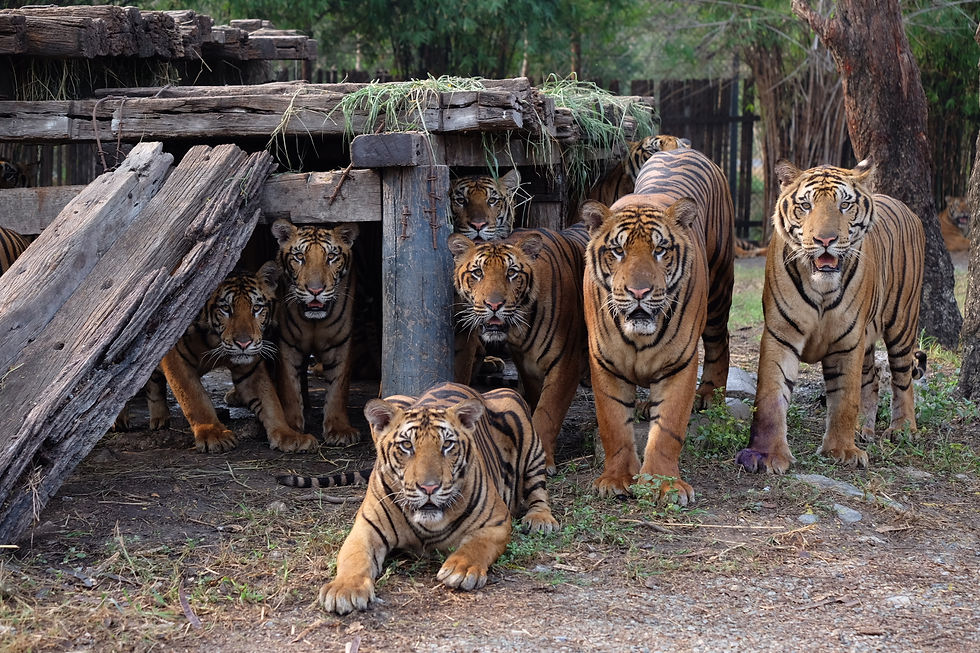DO GOOD KEEPERS MAKE TIGERS LIVES BETTER? A LESSON FROM MY TIME AT SAFARI WORLD
- For Tigers
- May 13, 2022
- 2 min read
From 2016 up until 2018, I had the opportunity to volunteer at Safari World Bangkok, Thailand as a junior tiger keeper. From relatively early on, I was able to pick up a disconnect between what I found to be the fundamental pillars of effective zoo design and management and my observations. In my opinion, a good zoo must be able to showcase its animals as indispensable parts of nature in such a way that their right to exist intuitively is self-evident.

Yet, from my observations, the messages Safari World conveys were often inaccurate and in some cases, damaging. As the establishment offers photo-taking opportunities with both tiger and lion cubs, I felt that instead of being portrayed as respectable predators, the animals are portrayed as mere photo props with a price tag. Looking back, although I was able to identify the incompetence in practice, I did not realise the severity of what Safari World was doing, not only to the welfare of the animals but the potential effects its damaging messages have on the future welfare and wellbeing of captive tigers.

Although a small portion of the zoo’s tiger population is in relatively good health with daily access to a large, semi-naturalistic enclosure, as a zoo that both offers photo-taking opportunities for tourists and breed their own, the number of tigers at Safari World is in surplus. This means that when not on display or chosen to not be on display whether, for breeding, aesthetic, or funding reasons, the tigers will spend their whole lives in 3x4x3 barren, concrete cages. And although these enclosures may be big enough to pass the minimum requirements for housing an adult tiger, with no enrichment plan in sight, furnishings or improper care, these tigers are often bored, exhibit aberrant behaviours and are overweight.

Despite definite shortcomings in the zoo’s management’s decisions in terms of tiger welfare, the keepers at Safari World have been one of the best mentors that I have had the privilege to learn and work with. The keepers do care for and absolutely adore the tigers that they work with. The deep relationships fostered between the keepers and their tigers can be observed in the friendly personalities most of the tigers possess. From sourcing and creating enrichment items as well as letting the tigers roam areas that are usually out-of-bounds,the keepers continuously made efforts to provide for the tigers. It is possible that these relationships and the keepers’ efforts that go above and beyond their job requirements enabled the tigers to flourish and develop good psychological wellbeing despite the lack of adequate husbandry.
Thus, from replicating their interactions, I was able to build multiple long-lasting relationships with a big portion of the tigers there myself. Although Safari World still has a long way to go in terms of practising good tiger welfare, there have been some improvements put in place in recent years. Therefore, I am excited to see what other improvements they will implement next.


Very interesting blog post. Looking forward to see what the developments will be!